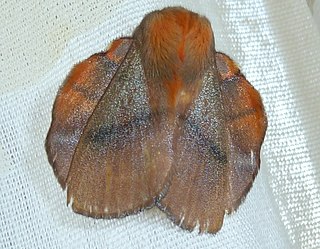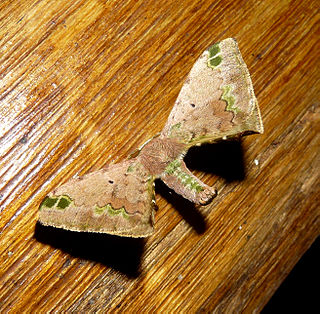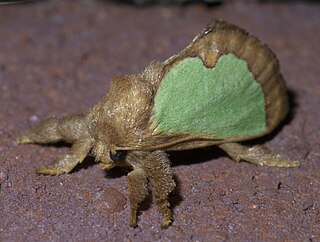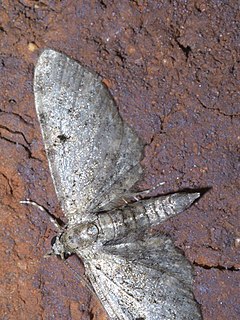Related Research Articles
Herbert Druce, FLS was an English entomologist. His collections were acquired by Frederick DuCane Godman (1834–1919), Osbert Salvin (1835–1898), and James John Joicey (1870–1932) before being bequeathed to the Natural History Museum, London. He is not to be confused with his son, the English entomologist Hamilton Herbert Druce, who also worked on Lepidoptera.

Ignata is a Neotropical genus of butterflies in the family Lycaenidae.

Trichopisthia is a monotypic moth genus in the family Lasiocampidae erected by Per Olof Christopher Aurivillius in 1909. Its single species, Trichopisthia monteiroi, described by Hamilton Herbert Druce in 1887, is found in Zimbabwe, Mozambique and KwaZulu-Natal, South Africa.

Disphragis is a genus of moths of the family Notodontidae erected by Jacob Hübner in 1820. The genus is confined to the New World and it contains about 137 species.

Rhescyntis is a genus of moths in the family Saturniidae first described by Jacob Hübner in 1819.

Rhescyntis hippodamia is a species of moth in the family Saturniidae first described by Pieter Cramer in 1777. It is found from Mexico to Brazil.
Podalia is a genus of moths in the family Megalopygidae.

Megalopyge is a genus of moths in the family Megalopygidae.

Stenoglene is a genus of moths in the family Eupterotidae from Africa. The genus was described by Felder in 1874.

Anticla is a genus of moths of the Bombycidae family.

Indarbela is a genus of moths in the family Metarbelidae described by Thomas Bainbrigge Fletcher in 1922.
Indarbela norax is a moth in the family Cossidae first described by Herbert Druce in 1898. It is found in Mexico.

Eulophonotus stephania is a moth in the family Cossidae first described by Herbert Druce in 1887. It is found in Malawi, Mozambique, South Africa, Zambia and Zimbabwe.
Stenoglene hilaris is a moth in the family Eupterotidae. It was described by Felder in 1874. It is found in Mozambique and South Africa.
Hibrildes is a genus of moths in the family Eupterotidae.
Acrojana sciron is a moth in the family Eupterotidae. It was described by Druce in 1887. It is found in Cameroon, the Democratic Republic of Congo (Katanga), Equatorial Guinea and Sierra Leone.
Stenoglene thelda is a moth in the family Eupterotidae. It was described by Druce in 1887. It is found in Cameroon, the Central African Republic, the Democratic Republic of Congo and Sierra Leone.

Euclea is a genus of moths in the family Limacodidae. The genus was erected by Jacob Hübner in 1819. There are at least 40 described species in Euclea.

Tornos is a genus of geometrid moths in the family Geometridae erected by Morrison in 1875. There are about 17 described species in Tornos.
References
- ↑ Beccaloni, G.; Scoble, M.; Kitching, I.; Simonsen, T.; Robinson, G.; Pitkin, B.; Hine, A.; Lyal, C., eds. (2003). "Hibrildes norax". The Global Lepidoptera Names Index . Natural History Museum . Retrieved May 25, 2018.
- ↑ Afro Moths
- ↑ Druce, H. 1887b. Descriptions of some new species of Lepidoptera Heterocera, mostly from tropical Africa. - Proceedings of the Zoological Society of London 1887: 675–676
| This article relating to the superfamily Bombycoidea is a stub. You can help Wikipedia by expanding it. |